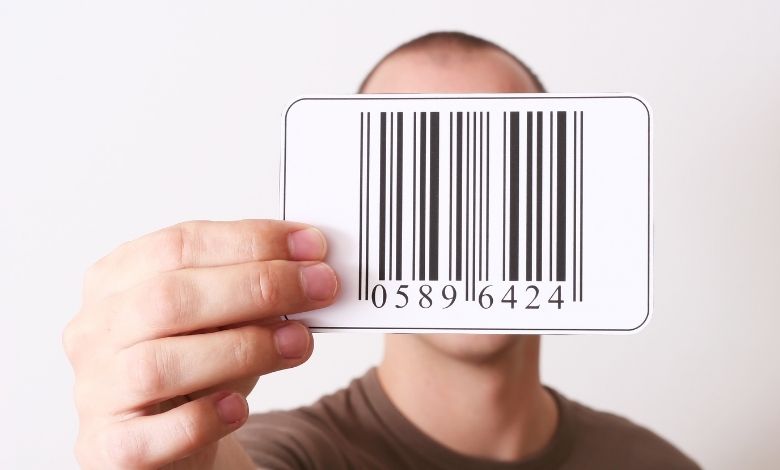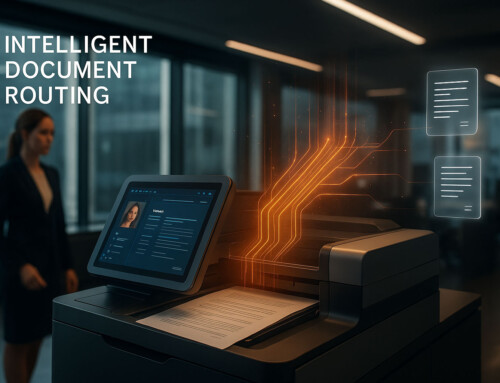 What do a busy superstore, sitting down to grab a menu, and an Amazon’s warehouse have in common?
What do a busy superstore, sitting down to grab a menu, and an Amazon’s warehouse have in common?
Aside from the fact that they all involve people they all share a useful but often underestimated element: Barcodes.
In today’s explorations of things that make life easier, we’re going to talk about how barcodes could make document management virtually painless.
Document management remains one of the most unproductive business processes in any organization. While it contributes very little to a company’s bottom line, it consumes lots of man-hours when done manually and incurs thousands of dollars in paper and consumables.
Barcodes, and document management systems that can read them, are here to change all that.
What Are Barcodes?
Barcodes are rectangles or squares with a combination of vertical black lines of varying thickness, with white spaces between the lines and black numbers above and beneath them. All these lines, spaces, and numbers contain information retrievable by computers linked to barcode scanners.
There are tw
o types of barcodes: one-dimensional (1D), which have only vertical or horizontal lines, and two-dimensional (2D), which can have horizontal or vertical lines as well as other shapes and patterns. Most scanners can only decipher 1D barcodes, which is why they remain the most popular format.
How Barcodes Work?
Here’s a straightforward example to help you understand how barcodes work:
- Scanner directs laser light or LED onto the barcode
- The scanner has a light-detecting component known as a photoelectric cell. As the scanner moves past the barcode, shining light onto it, the white areas will reflect most of the light while the black lines will reflect least.
- Based on the amount of light reflected and absorbed (which, in turn, corresponds to the white and black stripes), the photoelectric cell will generate a pattern of on-off pulses. For instance, if the barcode is (“black, white, black, black, white”), the cell would generate a pattern (“off, on, off, off, on.”)
- After generating this pattern, the cell would send it to an electronic circuit connected to the scanner, which would convert these on-off pulses into zeroes and ones (binary digits). Thick black lines will be titled ‘1’, thick white spaces ‘0’.
- These binary digits will then be sent to a computer attached to the scanner, which will detect the abovementioned code as 10110
In simple scanners, those with a single photoelectric cell, as you move the scanner past the barcode, the cell will detect each black-and-white stripe one by one. High-end scanners, which have an entire line of cells, can detect the entire code in one go.
Types of Barcode Scanners
Different types of barcode scanners are available out there, including:
- Basic Wand Scanner: Looking like electronic pans, these scanners operate on the principle mentioned above. They direct LED light onto the barcode and have a string of photoelectric cells to read the reflected light’s pattern. You’ll typically find these scanners at small convenience stores.
- Sophisticated Laser Scanner: Most likely to be found at a hypermarket, laser scanners are built into the base of the checkout lane. They are mounted underneath a glass panel and read barcodes in a flash. Laser scanners are much faster than basic wand scanners, though both can’t read QR codes.
- Image Scanner: Also known as QR code scanners or camera readers, image scanners feature a small camera that helps them capture the barcode’s image. They can detect horizontal and vertical lines, as well as images and patterns. You can also count on image scanners to read barcodes away from as far as 9-inches.
Why use Barcodes for Document Management?
According to an estimate, on average, companies misfile 1 in every five of their documents. Citigroup once calculated that a medium-size organization could save up to $700,000 per year if each of its employees saved only one sheet of paper per week.
The reduction in human error is only one major reason why more and more companies are turning to barcodes for document management. Organizations can harness various other benefits by combining a barcode reader with a document management system.
A barcode reader could enable companies to quickly sort through coded documents and locate the file they might be looking for. The entire process will be much more efficient than the manual tasks of data entry, document indexing, and archiving.
Benefits of Barcodes in Document Management
The use of barcodes translates into the achievement of the following purposes:
1) Saves Time
According to Gartner Research, workers in professional fields spend up to 50% of their daily time looking for information. The same study found out that, on average, a professional has to spend almost 18 minutes locating one misfiled document.
As a result, by embedding barcodes onto your documents, you’d be making sure your employees spend as little time as possible on tasks that contribute little to your bottom line. This would help them focus on tasks that add more value to your business practices.
2) Reduced Error Rate
Manual data entry not only consumes innumerable man-hours. It’s also ridden with errors. A conservative estimate puts the chance of error at 1 percent. This means that for every 100 documents filed, at least 1 will end up where the data entry operator doesn’t want it to end.
Barcodes, on the contrary, are 99.99% accurate. Want to know what that percentage means when translated to hard numbers? It means that barcode scanning will commit a single mistake for every (hold your breath) 70 million pieces of scanned information.
3) Saves Money
Did you know that north of $14,000 of productivity is lost per employee per year due to the difficulties they face in finding data related to their job? The bad news continues. The average cost of finding a misfiled document, around $120, balloons to $200 if it isn’t found and has to be reproduced.
By opting for barcodes in document management, you’d be bringing down these sunk costs to zero by reducing your company’s use of paper and consumables. Plus, your employees would be able to take advantage of the time saved by engaging in more productive activities.
4) Easy Access
Imagine the old way of retrieving documents from the archive. An employee had to leave their desk, travel to the documents room and sort through dozens and dozens of pages to locate that one page that was crucial for the task they were performing at the time.
While the arrival of electronic documents and records has already taken us out of the dark age of document management, barcodes, facilitating access to the information when it’s needed, where it’s needed, would make the search experience much simpler and convenient.
5) Added Security
Once you embed barcodes on the electronic or physical documents, your document management system would require you to give permissions to the professionals who can access the information hosted in the barcode, under the conditions that your organization applies.
As a result, you can apply security measures and protocols that the law requires you to apply. In addition, barcodes also have the ability to automatically flag sensitive data for maximum-security storage, rather than counting on manual oversight for the same.
6) Indexing and Storage
Documents are more often than not connected; financial institutions need various documentation to approve or reject loan offers. Insurance companies require their employees to consult a variety of forms to process policy applications.
With barcodes, it’s now possible to spontaneously associate, index, and store documents related to each other. This will make it incredibly easy for your staff to find not only what they’re looking for at any particular moment but also everything connected to it.
7) Keep Workflow Moving
Using barcodes to track files can also improve the management of workflow. Most of the time, a file must move from one desk to another as a transaction or process progresses through its various steps. Barcode tracking software can enable managers to identify how files are moving from person to person.
This, in turn, might enable them to identify and resolve bottlenecks, making sure that the workflow is moving at its most optimum pace. As a result, the same process that previously took weeks could now reach completion in a fraction of that time.
Conclusion
Do you own a document-heavy organization? It’s a minor miracle how your employees have managed to stay productive without the help of barcode technology. You need to give them a pay raise for their efforts to manually enter, sort through and retrieve physical documents.
More importantly, if you want to give their super-human abilities a rest, make sure to select a document management software that offers barcode scanning ability. One example that comes to mind is ccScan document management system – which is equipped with barcode and OCR capabilities.
Doing this won’t only benefit them. Instead, as the benefits mentioned above show, it’s your organization that will benefit the most.





